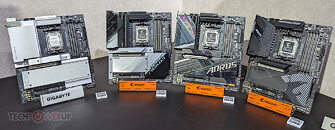
MSI Presents Its Brand New Lineup of Amazing Innovations at IFA 2022
At IFA 2022, MSI introduces its latest products, tailor-made for gamers, creators, and professionals, to the world. From gaming laptops, desktops, and components, to business monitors, industrial computers, and automotive and commercial solutions, MSI is revealing the most powerful, capable new products, covering every need and every aspect of technology.
Exhibition Date: Sep 2nd - Sep 6th, 2022
Opening Hours: 10:00 AM - 06:00 PM
Location: Stand 102, Hall 11.2 @ Messe Berlin, Germany
"IFA 2022 is one of the world's most important consumer electronics trade shows. After years of virtual and distanced living, MSI is especially well-prepared to support all industries and professions with our innovations and solutions, to help them adapt to new ways of working, living and entertaining," said Sam Chern, MSI Marketing Vice President.
Exhibition Date: Sep 2nd - Sep 6th, 2022
Opening Hours: 10:00 AM - 06:00 PM
Location: Stand 102, Hall 11.2 @ Messe Berlin, Germany
"IFA 2022 is one of the world's most important consumer electronics trade shows. After years of virtual and distanced living, MSI is especially well-prepared to support all industries and professions with our innovations and solutions, to help them adapt to new ways of working, living and entertaining," said Sam Chern, MSI Marketing Vice President.




































































